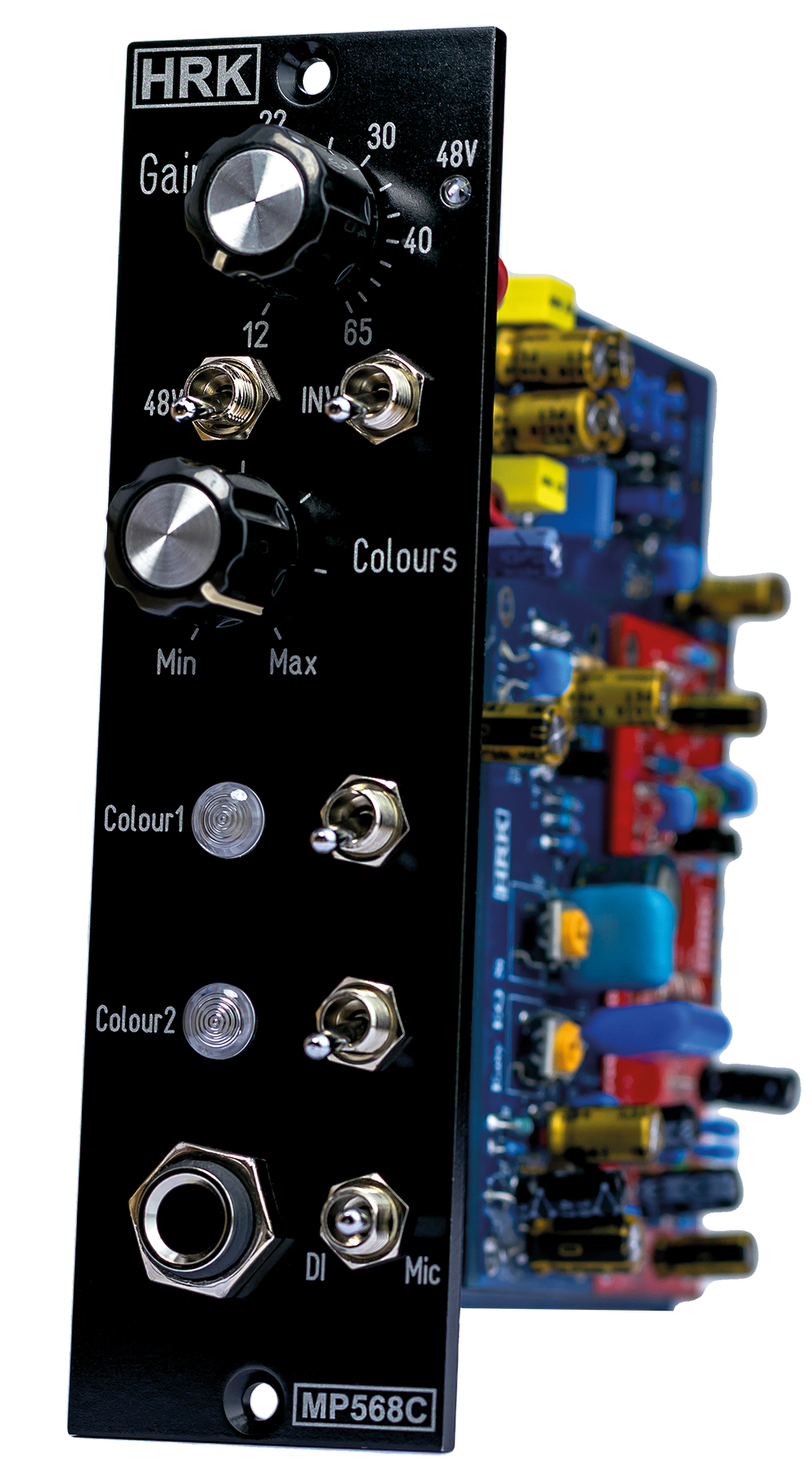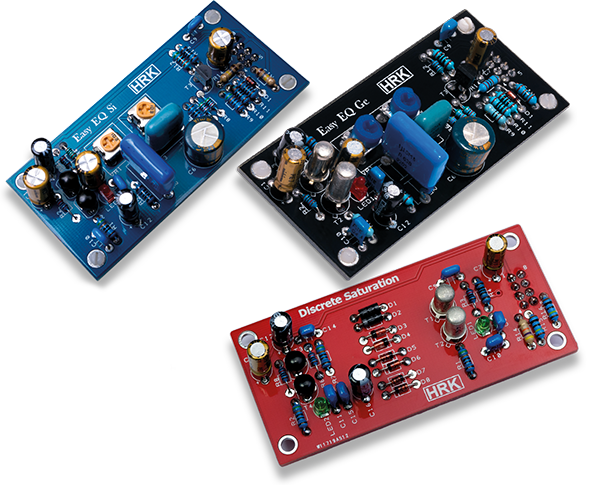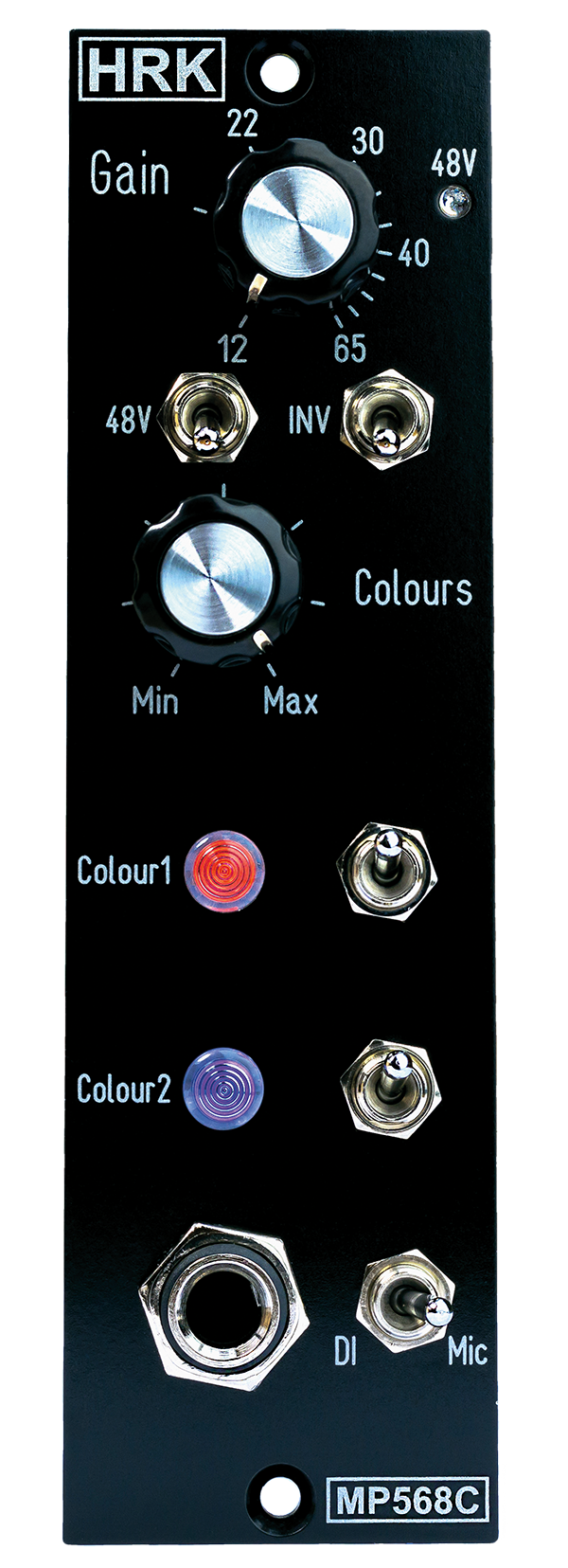HRK MP568C Review – Adding Some Colour Into The Mix
Could the HRK preamp be all things to all people? Mike Hillier splashes a bit more colour in his life… Details Kit MP568C Manufacturer HRK Price £369 (excluding Colour modules) Web www.barthrk.com Preamps come in all manner of flavours, from super clean and transparent through to heavily coloured, and many studios will aim to have […]

Could the HRK preamp be all things to all people? Mike Hillier splashes a bit more colour in his life…
Details
Kit MP568C
Manufacturer HRK
Price £369 (excluding Colour modules)
Web www.barthrk.com
![]()
Preamps come in all manner of flavours, from super clean and transparent through to heavily coloured, and many studios will aim to have a selection of different models available to choose from when recording. Whether it’s the thick transformer sound of a Neve 1073; the aggressive discrete op-amp sound of an API 512c, the snappy transformerless sound of an SSL; the clean tube sound of a UA 610, or the gritty transistor sound of a Shure M67, the choice of preamp will have an impact on how the final recording turns out.
But what if we could get all these sounds from just one preamp? The HRK MP568C (and its germanium-EQ MPQ568C variant) take the Colour module format developed by DIY Recording Equipment (see our review of the Colour Palette at www.musictech.com) and puts it in the preamp itself.
Painting by numbers
We were sent the MP568C along with several of HRK’s own Colour modules, the British Console, Discrete Saturation and Easy EQ Ge which, along with our own collection of modules here in the studio, made for a very varied setup.
As both the British Console and Discrete Saturation modules are designed to emulate classic recording consoles, we decided to start our tests with the British Console and the Easy EQ Ge modules installed, with the British Console in the first slot and the EQ in the second Colour slot.
The Easy EQ Ge has two fixed shelving filters with small trim pots, allowing for -12/+14dB of gain. Since the trim pots cannot be accessed when the MP568 is installed inside a 500 Series chassis, we opted to initially install it using a 500 Series breakout cable.
This let us place the module on our workbench for testing, so we were able to quickly adjust the trim pots without fully uninstalling the module. It also made swapping out the various modules a little easier.
Staying within the lines
With both colour modules off, the MP568C preamp is very clean, almost the definition of wire with gain. There’s plenty of headroom available, and our D/A convertors peaked out before the preamp started to break up. One issue we did come across, however, was the lack of a pad or output trim, which means that the MP568C isn’t ideal for loud sources. Even 12dB of gain added to a sensitive mic on a kick drum can lead to clipping at the convertors.
One problem with the wire-with-gain approach to preamps is that they tend to sound rather thin and uninspiring. This is why so many engineers love the sound of tubes, transistors and transformers, all subtly saturating the signal and adding warmth and colour. Engaging the British Console module, we only have to dial in a touch of Colour before our acoustic-guitar recording starts to sound more alive.
Dial up further and the signal breakup starts to become more obvious, but still pleasing and in a busy mix, could be used to help the guitar to cut through. On the off chance that you need even more gain from your system, the British Console module has two jumpers, which can be set to each provide 8dB of additional gain. For recording, this cab be quite useful, letting you dial back the gain knob on the front panel and rely more on gain from the British Console itself.
Dialling it back and adding the Easy EQ Ge to the chain brings with it a completely new sound. We opt for a fairly modest smile curve on the EQ module, so as not to overly shape the signal: just to add a little depth and sparkle. And it works an absolute treat. The two modules combined shape the signal and produce an acoustic-guitar recording that sounds like it’s been processed through a much more expensive signal chain.
Dialling it up brings out the saturation again, but now that additional colour is being boosted by the EQ, with a soft-clipper stage at the end of the Easy EQ Ge taming the transients. It all gets a little trashy, and while this setting would certainly have its place in some mixes, it is far from natural, or warm.
Finding the sweet spot is going to be all about experimentation with each signal. Switching from the mic input to the DI, we plugged in our bass guitar and began playing around with different Colour combinations. The Easy EQ Ge had some uses, but this time, sounded best with a little top and bottom dialled out, to push the midrange forward.
We also liked the Easy EQ Ge placed in the first slot, to enable it to shape the signal before it hits the next module, and our favourite in that slot was our own TB Audio CMOS Steezer module, although the Discrete Saturation module, pushed hard, also made for some very commanding bass tones.
In addition to the MP568C preamp, HRK makes a similar preamp with a built-in EQ section, the MPQ568C. This is a two-band discrete germanium EQ, with switchable shelving frequencies for each band. The EQ offers more control than the Easy EQ Ge module, and puts the gain controls on the front panel, so if you opt for this variant, we’d recommend against using it with the Easy EQ modules, instead picking two more varied saturation modules for more control.
Measuring up
As well as developing the Colour format, DIY Recording Equipment also has a Colour-based preamp, the DIY|RE CP5, however this only has space for a single Colour module, rather than the two built into the HRK MP568C. Big Bear Audio has also been developing a Colour-based 500 Series preamp, which we hope to be testing soon.
MP568C key features
- 500 Series
- Mic /DI inputs
- 12-65dB gain
- 2 Colour module slots
- Individual Colour switches
- Separate Colour level



